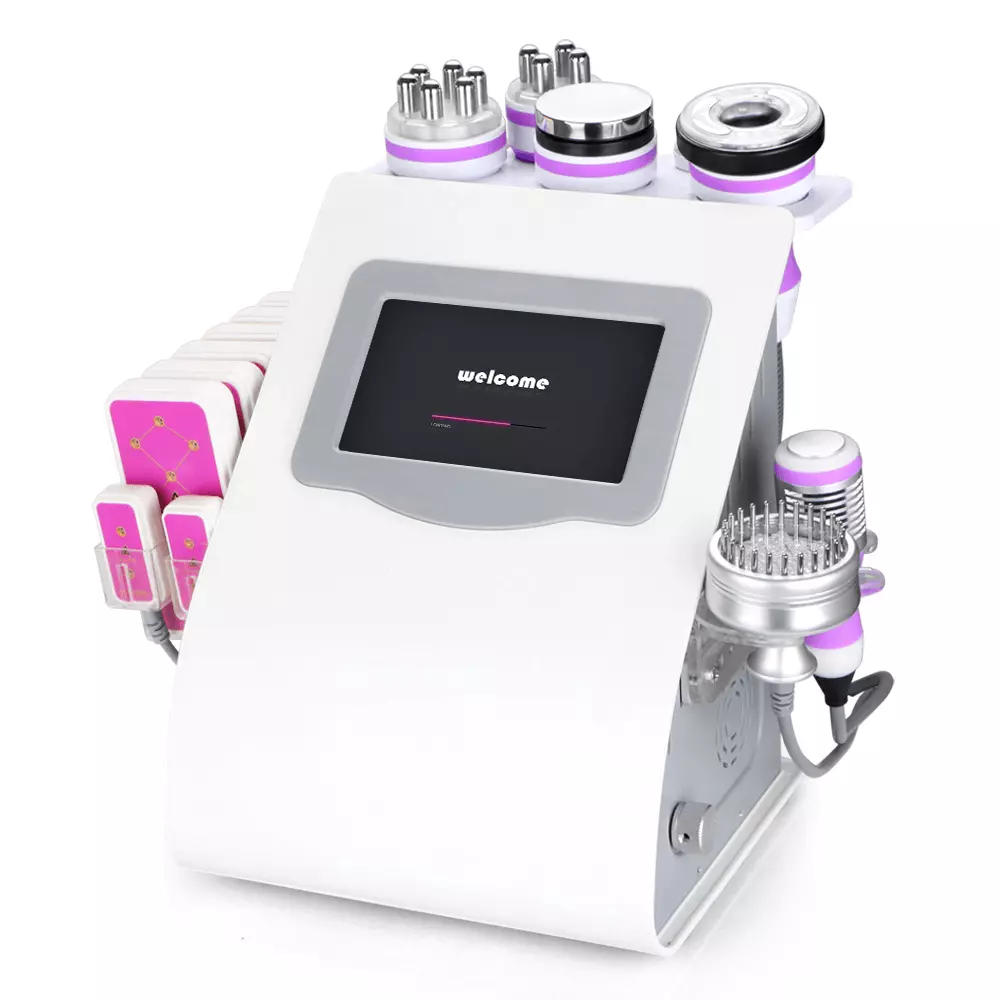Cavitation machines can remove fat without intrusive procedures, making them more and more popular in the beauty and health business. These new technologies offer a non-surgical method of body contouring and shaping. Want to know how they work and how often to use them? Read on!
Table of Contents
What Is the Process of Fat Cavitation?
Let’s take a closer look at the procedure to have a better understanding of Unoisetion Cavitation Machine. Fat cavitation breaks down resistant fat in the following ways:
- Technology for Ultrasound: The process starts with the application of a handheld ultrasound-emitting instrument. These low-frequency sound waves target the fat cells underneath the skin.
- Fat Cell Disintegration: The ultrasonic vibrations cause tiny, high-pressure bubbles to form inside the fat cells. The fat cells burst and disintegrate as a result of these bubbles’ quick expansion and contraction.
The body naturally breaks down and gets rid of fat cells by using the metabolic and lymphatic systems. This results in enhanced body contour and a slow decrease in body fat.
- Lymphatic Drainage: By promoting lymphatic drainage, the procedure helps eliminate toxins and waste from fat cells, giving you smoother skin with more defined contours.
- Metabolism Boost: The treatment’s increased blood flow may also aid in accelerating metabolism, which promotes the breakdown of fat.
Depending on the treatment area, each fat cavitation session typically lasts 30 to 60 minutes. Clients find the therapy to be comfortable because it is non-invasive and painless. Additionally, you can resume your normal activities right away following the treatment because there are no incisions or anaesthesia required.
Benefits of Cavitation Machine Use
Unoisetion cavitation 2.0 offers a number of benefits:
- There is no need for surgery or recovery time.
- Specific body sections might be the focus of targeted fat loss.
- Ultrasonic waves may promote the production of collagen, which increases the flexibility of the skin.
Possible Drawbacks
Typical adverse effects consist of:
- Redness develops in the treatment area.
- Minor bruising may happen under certain circumstances.
- Slight discomfort or sensitivity in the treated area.
It is always a good idea to consult an aftercare manual following these procedures. Although a detailed explanation of how cavitation machines operate is not necessary, it is always desirable to have a general understanding of their operation and its key aspects.
What is the Frequency of Cavitation Treatments? What Professionals Suggest
| Treatment Area | Frequency | Sessions Required | Single Session Duration |
| Stomach/abdomen | 1 to 2 sessions per week, every 3-7 days | 6 to 12 sessions | 20-40 mins |
| Thighs and buttocks | 1 to 2 sessions per week, every 3-7 days | 6 to 10 sessions | 20-40 mins |
| Arms | 1 to 2 sessions per week, every 3-7 days | 4 to 8 sessions | 20 mins |
| Chin or face | 1 to 2 sessions per week, every 3-7 days | 3 to 6 sessions | 20 mins |
What Is the Appropriate Cavitation Rate?
Experts advise one to two sessions per week, with a minimum of 72 hours—typically 3–7 days—between treatments. You can ask the doctor for an assessment depending on the size of the treatment area and schedule further sessions according to your metabolism.
This time frame gives the body adequate time to metabolise and shed damaged fat cells through the lymphatic system since the body requires time to digest the waste and drain it out. Your detox systems may become overloaded if you attend too many sessions, which could also lessen the treatment’s effectiveness.
What to Anticipate from your Ultrasonic Cavitation Session?
Ultrasound cavitation is a rather common treatment, which may surprise you. Neither a numbing cream nor a general anaesthetic are required. A conductive gel is required for the procedure in order to form a link between the skin and an ultrasonic handle. When passing the handle across the skin, this gel lessens friction by preventing the development of any extra air space between the handle and the skin.
Your clinician will regulate the frequency as the handheld ultrasound instrument passes over your target location. Patients frequently report experiencing a warm, tingling sensation as the device moves over their skin, despite the procedure’s reputation for being painless and non-invasive. A buzzing sound while the device is in use is also common.
Treatment can run anywhere from 40 minutes to an hour, with some patients experiencing lengthier sessions. This depends on the area you want to treat and the size of your cellulite and fat deposits. To further improve the outcomes, a body lotion with potent lipolytic qualities might be applied.
Conclusion
Cavitation machines use ultrasonic technology to target and kill fat cells, making them a safe and easy way to reduce body fat. Without requiring surgery or recuperation, this technique improves skin texture and contours the body. Redness or bruises are examples of minor adverse effects that can happen, but they are usually moderate and temporary.

